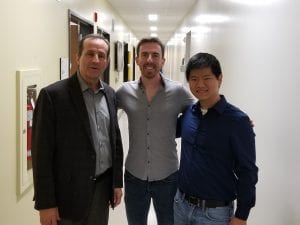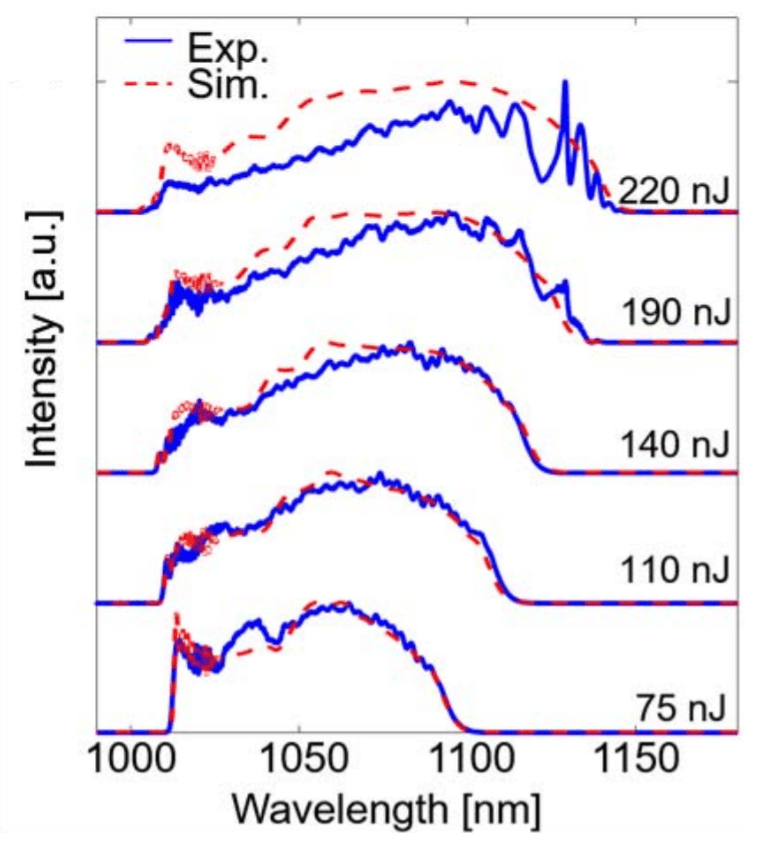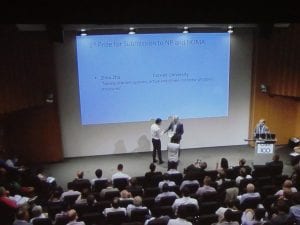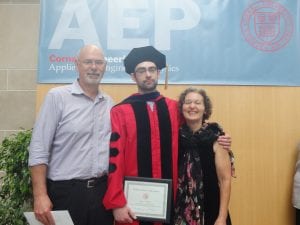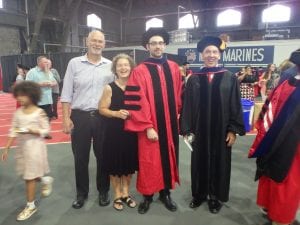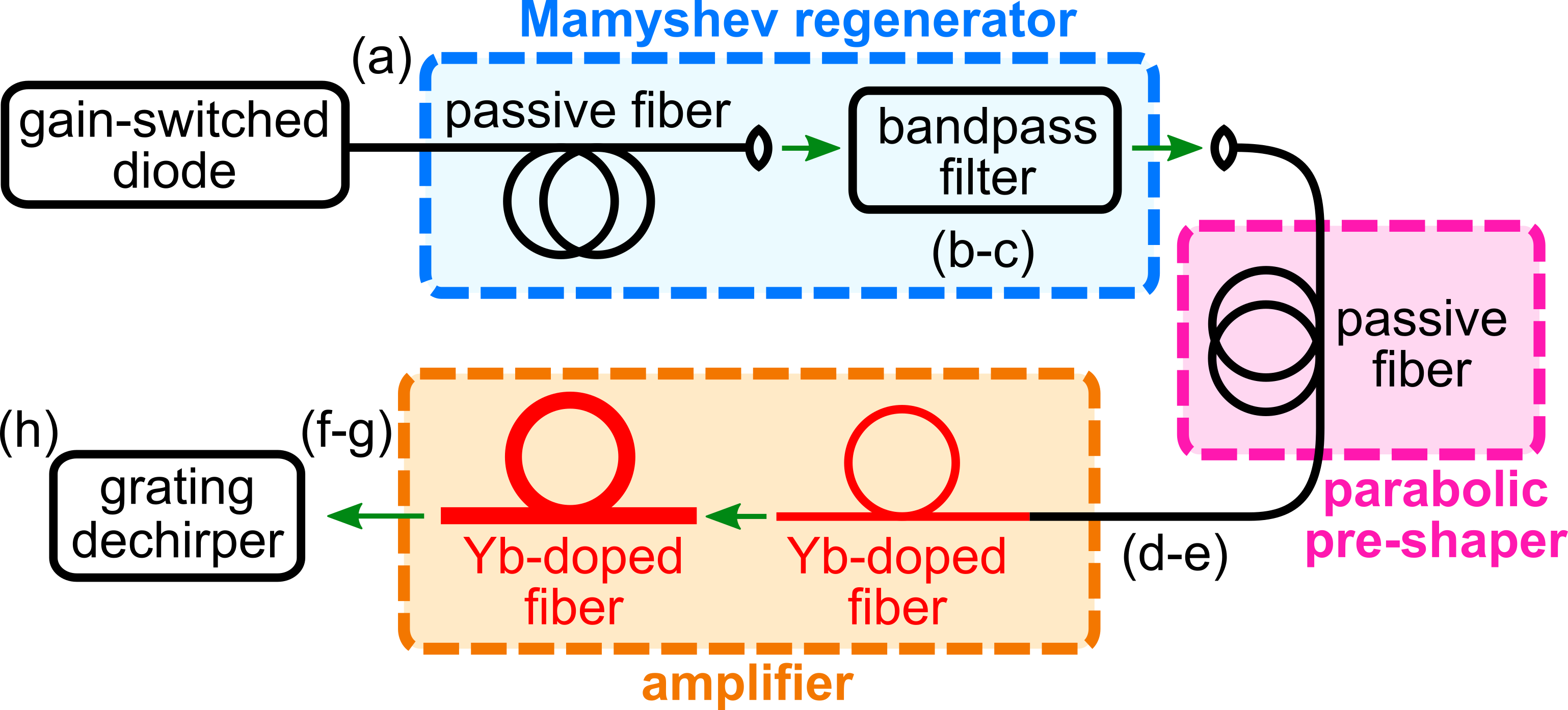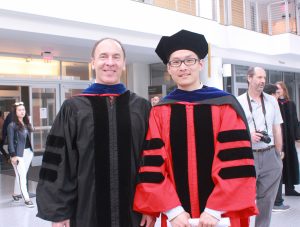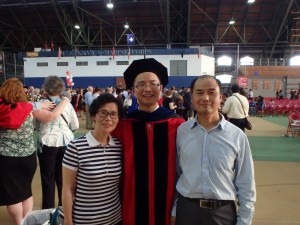Normal-dispersion fiber optical parametric chirped-pulse amplification
An ongoing limitation of fiber lasers is their lack of broad wavelength tunability. Here, we address this problem using fiber optical parametric chirped-pulse amplification (FOPCPA), which combines the energy capacity of chirped pulse amplification with the spectral flexibility of optical parametric amplification and the practical benefits of fiber. Notably, this is the first FOPCPA to be pumped in the normally-dispersive regime, which permits phase-matching far from the pump wavelength.
The system operates by coupling a stretched, broadband pump pulse and a continuous-wave signal into a photonic crystal fiber. At each point in time, the monochromatic signal interacts via four-wave-mixing with a different wavelength of the chirped pump, resulting in an idler that is chirped in exactly the same manner as the pump. Scalability follows from the timescale-invariance of this process: stretching the pump at constant peak power likewise stretches the idler at constant peak power, increasing the energy without affecting the dechirped duration. By exploiting this property, we are able to convert pulses from the Yb-band to the important bio-imaging window near 1300 nm, with energies of >100 nJ and femtosecond-scale durations.

